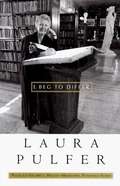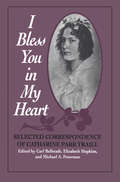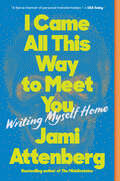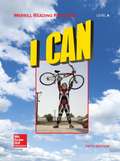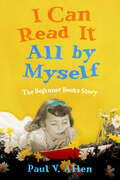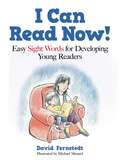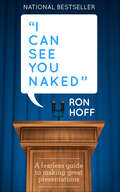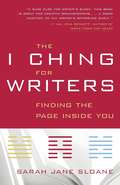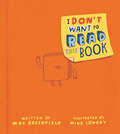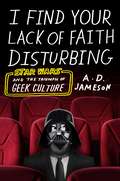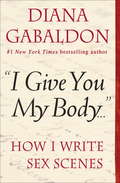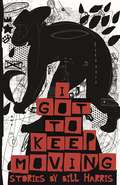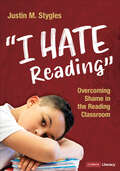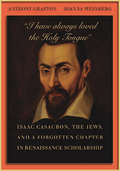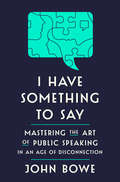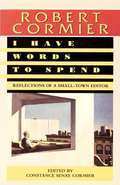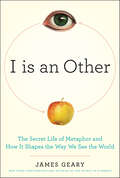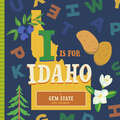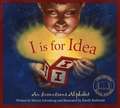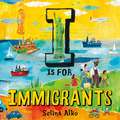- Table View
- List View
I Beg to Differ: Politically Incorrect, Proudly Midwestern, Potentially Funny
by Laura PulferYou may agree or you may differ with this Journalist who speaks her mind. What she says may pierce you to the heart or tickle your funnybone in these brief but telling pieces. She doesn't give you a second to become bored. You won't be perplexed by what she's talking about or her opinion of it. She expresses her views about the ruining of holidays in America, the inefficacy of Children's Services, a couple who lovingly set the standard for keeping the marriage vow, "in sickness and in health," universal legal coverage, putting, "Home of the spam Cook-off," on license plates, and getting a VISA card for her dog. She covers topics of common experience like airport delays, potholes, Dick and Jane, who have everything but a last name, and offers creative fixes for the blues, road rage, bigotry and illness. She redefines common terms like soap opera which she says are beautiful people who spend all their time in bed either kissing or in a coma. Pulfer aims to leave you smiling and thinking, and perhaps inspired to express your own ideas about anything and everything, loudly and clearly.
I Bless You in My Heart: Selected Correspondence of Catharine Parr Traill
by Carl Ballstadt Elizabeth Hopkins Michael A. PetermanThough her life was largely circumscribed by domesticity and poverty both in England and in Canada, Catharine Parr Traill's interests, experiences, and contacts were broad and various. Her contribution to our knowledge of nineteenth-century Canadian life, from a literary, historical, social, and scientific perspective, was significant. Chosen from her nearly 500 extant letters, the 136 presented here vividly reflect typical aspects of social and family life, attachments to the Old World, health and medical conditions, travel, religious faith and practice, the stresses of settlement in Upper Canada in the 1830s, and the dispersal of families with the opening up of the Canadian and American West. Together with the introductory essays, Traill's correspondence offers an intimate and revealing portrait of a courageous, caring, and remarkable woman - mother, pioneer, writer, and botanist.
I Came All This Way to Meet You: Writing Myself Home
by Jami AttenbergA Most Anticipated Title from: USA Today * The Guardian * Alma * Fodor’s * AV Club * Vogue * KatieCouric.com * BookRiot * LithubFrom New York Times bestselling author Jami Attenberg comes a dazzling memoir about unlocking and embracing her creativity—and how it saved her life. In this brilliant, fierce, and funny memoir of transformation, Jami Attenberg—described as a “master of modern fiction” (Entertainment Weekly) and the “poet laureate of difficult families” (Kirkus Reviews)—reveals the defining moments that pushed her to create a life, and voice, she could claim for herself. What does it take to devote oneself to art? What does it mean to own one’s ideas? What does the world look like for a woman moving solo through it?As the daughter of a traveling salesman in the Midwest, Attenberg was drawn to a life on the road. Frustrated by quotidian jobs and hungry for inspiration and fresh experiences, her wanderlust led her across the country and eventually on travels around the globe. Through it all she grapples with questions of mortality, otherworldliness, and what we leave behind.It is during these adventures that she begins to reflect on the experiences of her youth—the trauma, the challenges, the risks she has taken. Driving across America on self-funded book tours, sometimes crashing on couches when she was broke, she keeps writing: in researching articles for magazines, jotting down ideas for novels, and refining her craft, she grows as an artist and increasingly learns to trust her gut and, ultimately, herself.Exploring themes of friendship, independence, class, and drive, I Came All This Way to Meet You is an inspiring story of finding one’s way home—emotionally, artistically, and physically—and an examination of art and individuality that will resonate with anyone determined to listen to their own creative calling.
I Can (Merrill Linguistic Reading Program)
by Cecil Mercer Mildred Rudolph Rosemary WilsonUsed in place of traditional reading programs to give at-risk readers the appropriate kinds of structure, pacing, and practice
I Can Read It All by Myself: The Beginner Books Story
by Paul V. AllenIn the late 1950s, Ted Geisel took on the challenge of creating a book using only 250 unique first-grade words, something that aspiring readers would have both the ability and the desire to read. The result was an unlikely children’s classic, The Cat in the Hat. But Geisel didn’t stop there. Using The Cat in the Hat as a template, he teamed with Helen Geisel and Phyllis Cerf to create Beginner Books, a whole new category of readers that combined research-based literacy practices with the logical insanity of Dr. Seuss. The books were an enormous success, giving the world such authors and illustrators as P. D. Eastman, Roy McKie, and Stan and Jan Berenstain, and beloved bestsellers such as Are You My Mother?; Go, Dog. Go!; Put Me in the Zoo; and Green Eggs and Ham. The story of Beginner Books—and Ted Geisel’s role as “president, policymaker, and editor” of the line for thirty years—has been told briefly in various biographies of Dr. Seuss, but I Can Read It All by Myself: The Beginner Books Story presents it in full detail for the first time. Drawn from archival research and dozens of brand-new interviews, I Can Read It All by Myself explores the origins, philosophies, and operations of Beginner Books from The Cat in the Hat in 1957 to 2019’s A Skunk in My Bunk, and reveals the often-fascinating lives of the writers and illustrators who created them.
I Can Read Now!: Easy Sight Words for Developing Young Readers
by David FernstedtI Can Read Now! is the perfect starting point for young children to learn about the building blocks of language and sentence structure. Through sound, sight, color, and repetition, this engaging book teaches kids 150 of the most commonly used sight words and their companion words so that children can start to form connections between language and the world around them. With this helpful resource, kids will begin to understand how to describe things in the world around them: their pets, their experience at the park, their parents, their trip to the zoo, and more! Featuring full-color illustrations as well as detailed step-by-step, word-for-word sentence building, I Can Read Now! will captivate young ones with its delightful artwork. This wonderful book will give them the foundation for a great education and a life full of language
I Can See You Naked: A Fearless Guide to Making Great Presentations
by Ron Hoff&“America&’s best book on making presentations strikes again.&” –Don E. Shultz, Northwestern University The smart, witty, nationally bestselling guide to public speaking. &“If you get nervous, just picture everyone in the audience naked.&” We've all heard this piece of advice on public speaking before. But what about &“Keep the ball alive!&” or &“Be a bit of Springsteen&”? There&’s more to being a great speaker than removing your audience&’s clothes, and Ron Hoff&’s I CAN SEE YOU NAKED goes beyond the basics to cleverly and insightfully demonstrate what an effective and engrossing presentation should look like. Hoff packs his book with funny and functional advice on how to overcome stage-fright and deliver the best possible speech for every occasion. I CAN SEE YOU NAKED will have you confidently facing a waiting audience—and, naked or not, they&’ll be hanging on your every word.
I Ching For Writers
by Sarah Jane SloaneI Ching interpretations and exercises intended for writers of all sorts. Suggestions for increasing imagination, creative thinking and writing skills based on I Ching hexagrams.
I Don't Want to Read This Book
by Max GreenfieldFrom actor Max Greenfield (from television&’s New Girl) comes a hilarious picture book for every child who thinks they don't like to read books (and all the kids—and grownups—who do). Words, sentences, and even worse, paragraphs fill up books. Ugh! So what's a reluctant reader to do? Actor Max Greenfield (New Girl) and New York Times bestselling illustrator Mike Lowery bring the energy and laugh-out-loud fun out for every child (and parent) who thinks they don&’t want to read a book. Joining the ranks of favorites like The Book With No Pictures and The Serious Goose, this clever and playful read-aloud breaks the fourth wall and will have all readers coming back for laughs again and again!
I Find Your Lack of Faith Disturbing: Star Wars and the Triumph of Geek Culture
by A. D. Jameson"Funny, incisive, and timely ... Jameson does for geeks what geek culture does for its superheroes: he takes them seriously, respects their power, and refuses to hide his deep affection." —Lawrence Kasdan, co-screenwriter of The Empire Strikes Back, Return of the Jedi, The Force Awakens, and Solo: A Star Wars StoryIn I Find Your Lack of Faith Disturbing, A. D. Jameson takes geeks and non-geeks alike on a surprising and insightful journey through the science fiction, fantasy, and superhero franchises that now dominate pop culture. Walking us through the rise of geekdom from its underground origins to the top of the box office and bestseller lists, Jameson takes in franchises like The Lord of the Rings, Guardians of the Galaxy, Harry Potter, Star Trek, and, in particular, Star Wars—as well as phenomena like fan fiction, cosplay, and YouTube parodies. Along the way, he blasts through the clichés surrounding geek culture: that its fans are mindless consumers who will embrace all things Spider-Man or Batman, regardless of quality; or that the popularity and financial success of Star Wars led to the death of ambitious filmmaking.A lifelong geek, Jameson shines a new light on beloved classics, explaining the enormous love (and hate) they are capable of inspiring in fan and non-fan alike, while exploding misconceptions as to how and why they were made. I Find Your Lack of Faith Disturbing tells the story of how the geeks have inherited the earth.
"I Give You My Body . . .": How I Write Sex Scenes
by Diana GabaldonFor writers looking to make sure their next physical interlude on the page inspires readers to share the moment rather than to laugh at it, bestselling author Diana Gabaldon divulges the writing secrets behind the sex scenes in her wildly popular Outlander novels. "Ask me to your bed," he said. "I shall come to ye." In this revealing compendium, acclaimed writer Diana Gabaldon shares her invaluable lessons for creating an immersive reading experience, from evoking a mood to using the power of emotions to communicate physical intimacy. You'll learn the difference between gratuitous sex and genuine encounters that move the story forward, and how to handle less-than-savory acts that nevertheless serve a narrative purpose. Gabaldon also notes that sex can be conveyed instead of described. With such tips as "The Rule of Three" for involving the senses, handy lists of naughty euphemisms (with instructions for use), and Gabaldon's own examples from the Outlander novels, "I Give You My Body . . ." is a master class in writing to draw readers in and keep them riveted to the page.
"I Give You My Body . . .": How I Write Sex Scenes
by Diana GabaldonFor writers looking to make sure their next physical interlude on the page inspires readers to share the moment rather than to laugh at it, bestselling author Diana Gabaldon divulges the writing secrets behind the sex scenes in her wildly popular Outlander novels. "Ask me to your bed," he said. "I shall come to ye." In this revealing compendium, acclaimed writer Diana Gabaldon shares her invaluable lessons for creating an immersive reading experience, from evoking a mood to using the power of emotions to communicate physical intimacy. You'll learn the difference between gratuitous sex and genuine encounters that move the story forward, and how to handle less-than-savory acts that nevertheless serve a narrative purpose. Gabaldon also notes that sex can be conveyed instead of described. With such tips as "The Rule of Three" for involving the senses, handy lists of naughty euphemisms (with instructions for use), and Gabaldon's own examples from the Outlander novels, "I Give You My Body . . ." is a master class in writing to draw readers in and keep them riveted to the page.
I Got to Keep Moving (Made in Michigan Writers Series)
by Bill HarrisIn the twenty-five linked short stories in his collection, I Got to Keep Moving, celebrated Detroit author Bill Harris vividly and deftly describes the inner and outer lives of a wide cast of characters as they navigate changing circumstances in the southern United States, pre- and post-Civil War. Addressing vital aspects of life—hope, family, violence, movement, and memory—I Got to Keep Moving is as mesmerizing as it is revealing. A veritable Canterbury Tales, the book follows a group of African Americans, beginning in the 1830s on a plantation in the fictional town of Acorn, Alabama, as they head north, and ending in the Midwest in the 1940s. The opening section contains nine stories that investigate the events that compelled the party to migrate. The second section consists of fifteen stories focusing on the life and travels of Pearl Moon and her blind son, and introduces the reader to a range of individuals—a white southern prison guard and his family, an ex-cowboy and expert marksman from Oklahoma, and the owner and entertainers of an "All Colored" traveling minstrel show, to name a few—during their quest to find a place for themselves. The third section, written in three voices of surviving members of the Nettles family, observes the truth of memory and the importance of who gets to tell and preserve it. Harris gives readers an unfiltered look into the legacy of slavery and racism in the United States, while demonstrating the strength and complexity of the players involved. Readers of fiction, especially those interested in short fiction and African American fiction, will find this stunning and unique collection a welcome addition to their libraries.
"I Hate Reading": Overcoming Shame in the Reading Classroom (Corwin Literacy)
by Justin M. StyglesIt can take a lifetime to eradicate a reader’s shame—or it can take one great teacher Shame-bound readers want someone to notice them. It’s true. But then what does a teacher do to help students? Justin Stygles found fresh answers in Gershen Kaufman’s seminal research on shame and applied it to his teaching. The results proved to him—and now us—that building relationships and taking deliberate actions to alleviate shame is crucial. With this remarkable book, Stygles shows us how to build an interpersonal bridge with students and make vulnerability okay. But make no mistake—disengaged readers need to feel competent before they fully buy in, and so the author packs the book with powerful instructional ideas. Learn to: Spot all the distress signals, including withdrawal, perfectionism, and compliance. Help students see that they are not permanently locked out of a reading life Use assessment instruments to note and celebrate incremental change Plan mini-units that develop skills in concert with engagement Design small group experiences that are free of levels and other shame-inducing labels Pump up independent reading with scaffolding and sociability Harness writing about reading to convince students of their uniqueness. The shame factor is real. It’s time we meet it head on, with innovation and the best thinking from multiple research fields. I Hate Reading is the tool that does just that.
"I Hate Reading": Overcoming Shame in the Reading Classroom (Corwin Literacy)
by Justin M. StyglesIt can take a lifetime to eradicate a reader’s shame—or it can take one great teacher Shame-bound readers want someone to notice them. It’s true. But then what does a teacher do to help students? Justin Stygles found fresh answers in Gershen Kaufman’s seminal research on shame and applied it to his teaching. The results proved to him—and now us—that building relationships and taking deliberate actions to alleviate shame is crucial. With this remarkable book, Stygles shows us how to build an interpersonal bridge with students and make vulnerability okay. But make no mistake—disengaged readers need to feel competent before they fully buy in, and so the author packs the book with powerful instructional ideas. Learn to: Spot all the distress signals, including withdrawal, perfectionism, and compliance. Help students see that they are not permanently locked out of a reading life Use assessment instruments to note and celebrate incremental change Plan mini-units that develop skills in concert with engagement Design small group experiences that are free of levels and other shame-inducing labels Pump up independent reading with scaffolding and sociability Harness writing about reading to convince students of their uniqueness. The shame factor is real. It’s time we meet it head on, with innovation and the best thinking from multiple research fields. I Hate Reading is the tool that does just that.
I have always loved the Holy Tongue: Isaac Casaubon, the Jews, and a Forgotten Chapter in Renaissance Scholarship
by Anthony Grafton Joanna WeinbergIsaac Casaubon (1559-1614) was one of Europe’s greatest Protestant scholars during the late Renaissance and was renowned for his expert knowledge of the early history of the church. Today, however, most of Casaubon’s books remain unread, and much of his vast archive remains unexplored. Grafton and Weinberg’s close examination of his papers reveal for the first time that Casaubon’s scholarship was broader and richer than anyone has previously suspected, and they present a Casaubon not found in earlier literature: one who used Jewish materials to illuminate, and at times to transform, scholars’ understanding of of early Christianity; and one who, at the end of his life, worked with a little-known Jewish scholar in order to master parts of the Talmud, which few Christians could study on their own. Most importantly , this book shows that a Christian scholar of the European Renaissance could explore—and develop striking sympathy and affection for—the alien world and worship of the Jews.
I Have Something to Say: Mastering the Art of Public Speaking in an Age of Disconnection
by John BoweA veteran journalist discovers an ancient system of speech techniques for overcoming the fear of public speaking—and reveals how they can profoundly change our lives.In 2010, award-winning journalist John Bowe learned that his cousin Bill, a longtime extreme recluse living in his parents&’ basement, had, at the age of fifty-nine, overcome a lifetime of shyness and isolation—and gotten happily married. Bill credited his turnaround to Toastmasters, the world's largest organization devoted to teaching the art of public speaking.Fascinated by the possibility that speech training could foster the kind of psychological well-being more commonly sought through psychiatric treatment, and intrigued by the notion that words can serve as medicine, Bowe set out to discover the origins of speech training—and to learn for himself how to speak better in public.From the birth of democracy in Ancient Greece until two centuries ago, education meant, in addition to reading and writing, years of learning specific, easily taught language techniques for interacting with others. Nowadays, absent such education, the average American speaks 16,000 to 20,000 words every day, but 74 percent of us suffer from speech anxiety. As he joins Toastmasters and learns, step-by-step, to successfully overcome his own speech anxiety, Bowe muses upon our record levels of loneliness, social isolation, and political divisiveness. What would it mean for Americans to learn once again the simple art of talking to one another?Bowe shows that learning to speak in public means more than giving a decent speech without nervousness (or a total meltdown). Learning to connect with others bestows upon us an enhanced sense of freedom, power, and belonging.
I Have Words to Spend: Reflections of a Small-Town Editor
by Robert CormierA collection of 85 essays by award-winning author Robert Cormier originally written as newspaper columns when he was a journalist. It includes commentary about people, nature, music, and movies.
I Is an Other: The Secret Life of Metaphor and How It Shapes the Way We See the World
by James GearyThe New York Times bestselling author examines how metaphors influence every aspect of our lives, from art to medicine, psychology to the stock market.Metaphor is much more than a mere literary device. Often hiding in plain sight, it is a critical aspect of how humans think and communicate. Metaphor is at work in all fields of human endeavor, including economics, business, science, and psychology.In I Is an Other, James Geary takes readers from Aristotle's investigation of metaphor right up to the latest neuroscientific insights into how metaphor works in the brain. Along the way, he demonstrates how metaphor affects financial decision making, creates effective advertising, and helps us achieve emotional insight and psychological change. Geary also explores how a life without metaphor, as experienced by some people with autism spectrum disorders, significantly changes the way a person interacts with the world.
I Is for Idaho (ABC Regional Board Books)
by Stephanie Miles Christin Farley<p>A is for Appaloosa horses . . .<p><p>B is for Boise . . .<p><p>C is for cutthroat trout . . .<p><p> With F for fly fishing, P for potatoes, and S for the syringa flower, going from A to Z has never been more fun! Take an alphabetized field trip around the Gem State and discover the plants, animals, foods, and places that make it, well, Idaho!<p>
I Is for Idea: An Inventions Alphabet
by Marcia Schonberg Kandy RadzinskiAn A to Z introduction to modern inventions such as computers, microwave, umbrella, zipper, and many more. Each invention is introduced with a poem and includes detailed-filled expository text.
I Is for Immigrants
by Selina AlkoThis alphabet picture book companion to the popular B Is for Brooklyn weaves together a multitude of immigrant experiences in a concise, joyful package. For readers of Dreamers by Yuyi Morales.What do African dance, samosas, and Japanese gardens have in common? They are all gifts the United States received from immigrants: the vibrant, multifaceted people who share their heritage and traditions to enrich the fabric of our daily lives. From Jewish delis to bagpipes, bodegas and Zen Buddhism, this joyful ABC journey is a celebration of immigrants: our neighbors, our friends.
I Judge You When You Use Poor Grammar: A Collection of Egregious Errors, Disconcerting Bloopers, and Other Linguistic Slip-Ups
by Sharon Eliza NicholsA hilarious and eye-opening tour of unforgettable typos, misspellings, and more with pictures culled from the Facebook group by the same name.Correct grammar and proper spelling can be a challenge, and their absence can be a source of gleeful humor to everyone but the victim of a bad grammar attack. How do you react to sandwich boards, road signs, laminated instructions, and other written missives that are just not exactly what their creator meant? If you’ve ever (gently) judged anyone else for their linguistic failures, if you find yourself guffawing about the frequent confusion between “incontinence” and “inconvenience,” if you’ve ever been tempted to whip out your marker to add in or cross out apostrophes, and if you’ve refused to answer e-mails in which “your” and “you’re” are used interchangeably, this book is for you.
